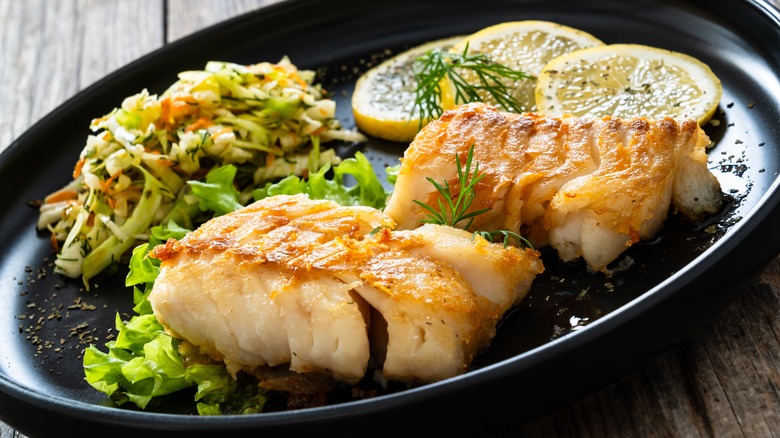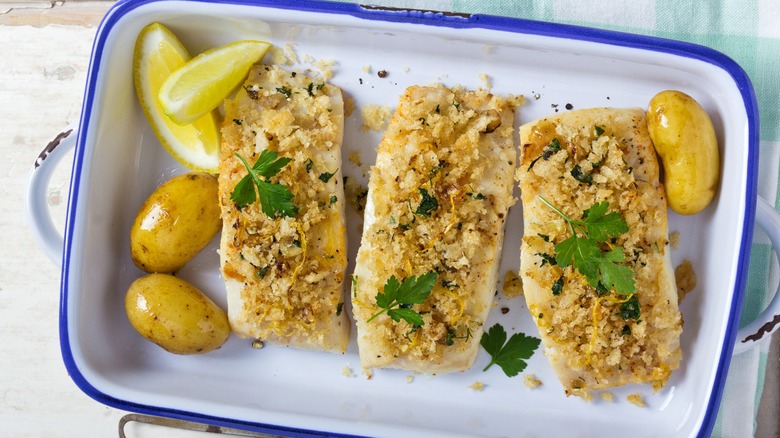The Trick For Pan-Searing Fish That's Impossible To Mess Up
Often, when learning to cook, one of the first things a home chef gravitates toward is a piece of fish, cooked simply in a pan with über-crisp skin. And why shouldn't they? It's a delicious way to prepare fish, and an essential kitchen skill. Unfortunately, even with a nonstick pan, sometimes a protein will latch on and not want to let go. When it comes to fish, this can be especially problematic, as the flesh is so delicate that applying any pressure to dislodge it can result in it falling apart.
There is a solution, though. While you won't get super crispy skin, you'll still achieve a delicious crust, your fish will never stick to the pan, and it will actually help ensure it's perfectly cooked every time. The secret? Breadcrumbs.
Simply follow the standard three-stage procedure of flour, egg wash, and breadcrumbs on one side of the fish, and pan-fry as you normally would. Once you've achieved a beautiful golden crust on the breaded side, finish it off in the oven. Because the fish itself isn't making direct contact with the pan, you'll protect that delicate flesh, ensuring a much more even and reliable cook. This is partly because, whereas you'd usually have to start your fish on a very high heat to prevent sticking, here you can maintain a lower temperature, treating the fish more gently and reducing the risk of overcooking.
How to make sure your fish comes out perfect
There are a couple of tips and tricks to keep in mind to make sure your fish comes out perfect every time. The first is to monitor your fish's temperature closely. The cooking time will depend on a whole range of factors, from the thickness of the fish to your oven's temperature, so it's better to go by internal temperature to know when it's done. Usually, for a meatier fish like cod, aim to pull it from the heat at 145 degrees Fahrenheit, while for something more delicate like grilled Chilean sea bass, aim slightly lower, around 140 degrees. Just keep a close eye on the temperature, and remember to take your reading from the thickest part of the fish.
You should also allow your breaded fish to rest for a while after coating. This will allow the breading to really bond with the fish, preventing it from disintegrating in the pan and subsequently burning. Use panko (which is not directly interchangeable with regular breadcrumbs) for the best results here. While you could use the traditional stuff, panko will keep your fish crisper for longer.
Finally, no piece of crispy fish is complete without a worthy accompaniment, and it doesn't get better than homemade tartar sauce. So, whip up a batch and give this technique a try — it's impossible to mess up!


